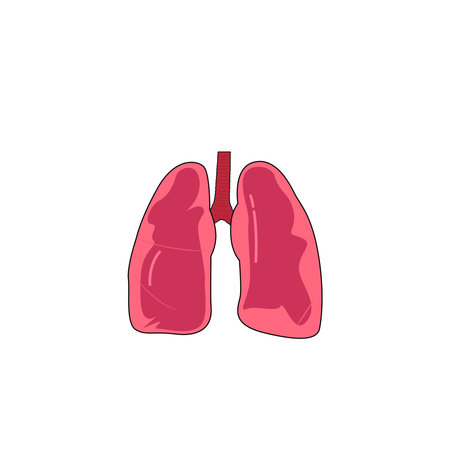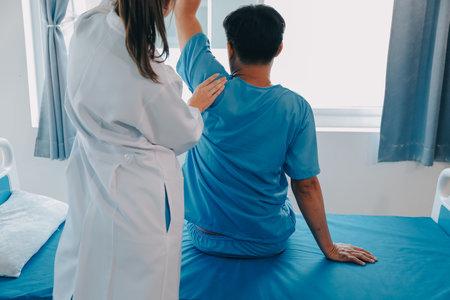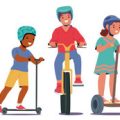Overview of Pediatric Stroke in the US
Pediatric stroke is a rare but serious condition that affects thousands of children each year across the United States. Although stroke is often thought of as something that happens mostly to older adults, it can also occur in newborns, infants, children, and teenagers. Understanding how pediatric stroke presents itself in the US is important for families, healthcare providers, and community organizations working to support recovery and improve outcomes.
Prevalence of Pediatric Stroke
Each year, an estimated 2 to 6 out of every 100,000 children in the US experience a stroke. While this number is much lower compared to adults, the impact on a child’s development and quality of life can be significant. The prevalence varies by age group, with most strokes occurring in newborns (perinatal stroke) and another peak during adolescence.
| Age Group | Estimated Annual Cases per 100,000 |
|---|---|
| Newborns (0-28 days) | 25-40 |
| Infants & Children (1 month – 18 years) | 2-6 |
| Adolescents (12-18 years) | 3-8 |
Causes of Pediatric Stroke in the US
The causes of pediatric stroke are different from those seen in adults. In children, strokes are often linked to congenital heart disease, blood disorders like sickle cell anemia, infections, trauma, or genetic conditions. Sometimes, no clear cause is found even after thorough investigation.
| Common Causes | Description |
|---|---|
| Congenital Heart Disease | Abnormalities present at birth affecting blood flow |
| Sickle Cell Disease | A genetic blood disorder common among African American children in the US |
| Infections | Certain infections can trigger clot formation or inflammation in blood vessels |
| Head or Neck Trauma | Injury from accidents or sports may damage arteries leading to stroke |
| Unknown (Cryptogenic) | No identifiable cause despite testing |
Demographic Factors Unique to the US
Pediatric stroke does not affect all groups equally in the United States. There are differences based on race, ethnicity, geographic location, and access to healthcare services. For example:
- African American children have a higher risk due to conditions like sickle cell disease being more prevalent.
- Children living in rural areas might face delays in diagnosis and treatment because of limited access to specialized care.
- Boys are slightly more likely than girls to experience pediatric stroke.
- Certain regions with higher rates of poverty may see more cases due to limited preventive care and awareness.
Pediatric Stroke Demographics Snapshot in the US:
| Demographic Factor | Impact on Stroke Risk/Recovery |
|---|---|
| Race/Ethnicity | African American and Hispanic children at higher risk; disparities linked to genetics and healthcare access |
| Gender | Boys have a slightly higher incidence than girls |
| Geographic Location | Rural communities face challenges with access and timely care compared to urban centers |
| Socioeconomic Status | Poverty and lack of insurance increase risk for delayed diagnosis and reduced rehabilitation options |
Pediatric Stroke: A Unique Challenge for American Families
The challenges faced by families dealing with pediatric stroke are unique within the US context because of these differences in demographics, causes, and healthcare systems. Recognizing who is most affected helps guide resources and specialized programs aimed at supporting childrens recovery across America.
2. Key Challenges in Pediatric Stroke Rehabilitation
Understanding the Unique Barriers Faced by Children and Families
Pediatric stroke rehabilitation in the United States comes with a set of distinct challenges that differ from those seen in adult stroke recovery. These barriers can be grouped into three major areas: clinical, social, and systemic. Each plays a significant role in shaping the rehabilitation journey for children and their families.
Clinical Challenges
Children’s brains are still developing, which means their needs after a stroke are very different from adults. Some of the main clinical obstacles include:
| Challenge | Description |
|---|---|
| Age-appropriate Therapies | Many rehab programs are designed for adults, not tailored to childrens cognitive and physical development levels. |
| Early Detection & Diagnosis | Pediatric strokes are often misdiagnosed or detected late because symptoms can be subtle or mistaken for other conditions. |
| Long-term Care Needs | Kids may need years of ongoing therapy as they grow, since new challenges can arise at different developmental stages. |
Social Challenges
The impact of pediatric stroke goes beyond medical care. Social factors can make recovery even more complicated:
- Family Stress: Parents and siblings often experience emotional distress and anxiety about the child’s future.
- School Reintegration: Returning to school can be tough due to physical limitations, learning difficulties, or social stigma.
- Lack of Awareness: Many communities and schools have limited understanding about pediatric stroke, leading to isolation or misunderstandings.
Systemic Barriers within the US Healthcare System
Navigating healthcare in the US is challenging—especially when it comes to rare conditions like pediatric stroke. Systemic issues include:
| Barrier | Description |
|---|---|
| Insurance Coverage Gaps | Pediatric rehab services aren’t always fully covered by insurance, leading to out-of-pocket costs for families. |
| Limited Access to Specialists | Pediatric stroke experts and comprehensive rehab centers are scarce, especially outside major cities. |
| Inequities in Care | Families from low-income or rural backgrounds face additional hurdles accessing timely and quality care. |
The Importance of Addressing These Challenges Together
No single solution fits all families. A combination of clinical expertise, community support, and policy changes is needed to make pediatric stroke recovery more effective and accessible across the US.

3. Evidence-Based Rehabilitation Approaches
Understanding Pediatric Stroke Rehabilitation in the US
Rehabilitation for children who have had a stroke is unique and needs to be tailored to their specific developmental stage, family situation, and cultural background. In the United States, pediatric stroke recovery programs focus on a comprehensive, evidence-based approach that combines multiple therapies to help kids regain skills and improve their quality of life.
Key Therapies in Pediatric Stroke Recovery
The main types of rehabilitation therapies used in American pediatric stroke recovery programs include physical therapy (PT), occupational therapy (OT), and speech-language therapy (SLT). Each therapy targets different challenges that children may face after a stroke. Here’s a simple overview:
| Therapy Type | Main Goals | Examples of Activities |
|---|---|---|
| Physical Therapy (PT) | Improve movement, strength, and balance | Walking practice, stretching exercises, balance games |
| Occupational Therapy (OT) | Regain daily living skills and hand function | Dressing, feeding practice, fine motor tasks like drawing or using buttons |
| Speech-Language Therapy (SLT) | Restore communication skills and safe swallowing | Speech exercises, language games, swallowing practice |
Customizing Therapy for American Kids and Families
Pediatric stroke survivors in the US often come from diverse backgrounds. Best practices recommend culturally sensitive care that involves families every step of the way. Therapists work closely with parents and schools to set goals that fit the child’s real-life needs—at home, at school, and in the community.
Family-Centered Approach
Programs encourage parents to participate in therapy sessions, learn techniques to use at home, and advocate for their child’s needs at school. This teamwork helps create a strong support system for the child’s ongoing progress.
Use of Technology and Community Resources
Many US programs use technology like telehealth sessions or interactive rehab apps to reach families in rural areas or those with limited access to specialists. Community resources such as support groups, adaptive sports programs, and summer camps are also promoted to help children build confidence and socialize with peers.
Summary Table: Support Strategies in US Pediatric Stroke Recovery Programs
| Support Strategy | Description/Example |
|---|---|
| Family Involvement | Parent training, family counseling, school meetings |
| Technology Use | Teletherapy visits, rehabilitation apps for practice at home |
| Community Integration | Adaptive sports leagues, peer support groups, local events for children with disabilities |
The combination of these evidence-based therapies and support strategies ensures that American children recovering from stroke receive the personalized care they need to reach their fullest potential.
4. Family and Community Support Systems
The Importance of Family Engagement
In pediatric stroke recovery, families play a vital role in the healing process. Parents, siblings, and caregivers provide emotional support, help children practice therapy activities at home, and advocate for their needs. In the U.S., many programs encourage family involvement through:
- Education sessions about pediatric stroke and rehabilitation
- Training on at-home exercises and daily routines
- Support groups for sharing experiences with other families
School Collaboration: Building Bridges for Reintegration
Returning to school is a major step for children recovering from stroke. Schools in the U.S. often work closely with healthcare teams and families to create Individualized Education Programs (IEPs) or 504 Plans tailored to each child’s needs. This collaboration ensures that children receive:
- Classroom accommodations (extra time, mobility aids, etc.)
- Therapy services during school hours (physical, occupational, speech)
- Counseling and peer support to ease social integration
Key Roles in School Collaboration
| Role | Main Responsibilities |
|---|---|
| School Nurse | Monitors health needs and medication management |
| Special Education Teacher | Adjusts curriculum and teaching methods as needed |
| Counselor/Psychologist | Supports emotional well-being and social skills development |
| Physical/Occupational/Speech Therapist | Provides therapy sessions on campus as required |
| Family Liaison | Acts as a bridge between home and school, ensuring communication flows smoothly |
Community Resources: Extending Support Beyond Home and School
A strong community network can make a big difference in a child’s recovery journey. In the U.S., there are many community-based resources available for pediatric stroke survivors and their families:
- Non-profit organizations offering educational materials, events, and advocacy opportunities (e.g., American Stroke Association)
- Pediatric therapy centers that offer specialized rehabilitation programs outside of hospital settings
- Adaptive sports teams and recreational programs designed for children with physical challenges
- Mental health services to help children and parents cope with stress or trauma related to stroke recovery
- Local government or faith-based support groups connecting families facing similar challenges
Examples of Community Resources in the US
| Resource Type | Description/Example |
|---|---|
| Pediatric Therapy Centers | Pediatric-focused outpatient rehab clinics providing PT/OT/speech services (Children’s Hospital of Philadelphia Stroke Program) |
| Non-Profit Organizations | The Children’s Hemiplegia and Stroke Association offers online communities and family conferences. |
| Adaptive Sports Programs | Organizations like Disabled Sports USA run adaptive sports leagues for kids. |
| Mental Health Support Groups | NAMI (National Alliance on Mental Illness) provides support groups for families navigating medical challenges. |
| School-Based Services | Local school districts offer special education support through IEPs or 504 Plans. |
Together, these family, school, and community systems form a powerful network that helps children not only recover physically but also thrive emotionally and socially after a pediatric stroke.
5. Innovative Solutions and Future Directions
Emerging Technologies in Pediatric Stroke Rehabilitation
In the United States, new technologies are transforming how children recover from stroke. These advancements not only make therapy more engaging for kids but also help therapists track progress more accurately. Here are some of the most promising innovations:
| Technology | Description | Benefits for Children |
|---|---|---|
| Virtual Reality (VR) | Interactive games and exercises in a virtual environment | Makes rehab fun, increases motivation, improves motor skills |
| Robotic-Assisted Therapy | Robots help with repetitive movement practice | Boosts muscle strength and coordination, supports precise movements |
| Telehealth Platforms | Online therapy sessions and remote monitoring tools | Gives access to care for rural families, reduces travel time and costs |
| Wearable Devices | Sensors that monitor movement and activity levels | Provides real-time feedback, helps tailor therapy plans |
Policy Initiatives Supporting Pediatric Stroke Recovery
The US government and advocacy groups are working hard to improve pediatric stroke care. Some key policy efforts include:
- Insurance Reforms: Pushing for better coverage of long-term therapies and mental health services for children with stroke.
- Pediatric Stroke Guidelines: Creating nationwide protocols so kids receive the right care as soon as possible, wherever they live.
- School-Based Support Policies: Encouraging schools to offer special education resources and accommodations for children recovering from stroke.
Advocacy Efforts: Giving Families a Voice
Nonprofit organizations, parent support groups, and medical societies are raising awareness about pediatric stroke. Their work includes:
- Educational Campaigns: Teaching parents and teachers about stroke symptoms so kids can get help quickly.
- Research Funding: Advocating for more research on child-specific stroke treatments and recovery strategies.
- Family Support Networks: Connecting families to share advice, resources, and emotional support.
Paving the Way Forward Together
The future of pediatric stroke recovery in the US looks brighter thanks to these innovative solutions. With continued investment in technology, supportive policies, and strong community advocacy, children have a better chance at reaching their full potential after a stroke.


